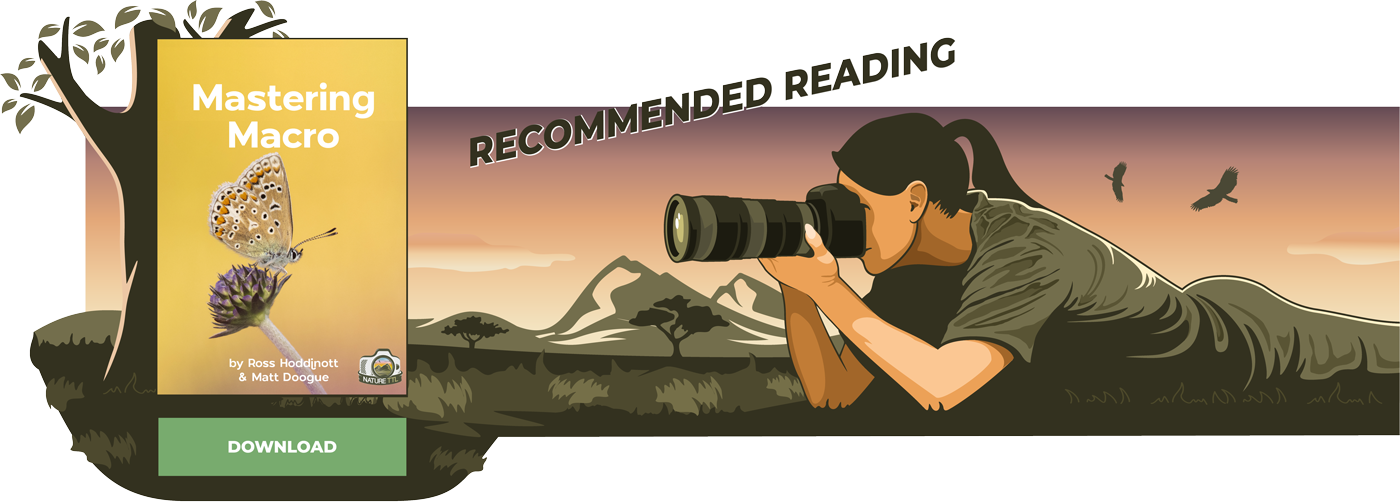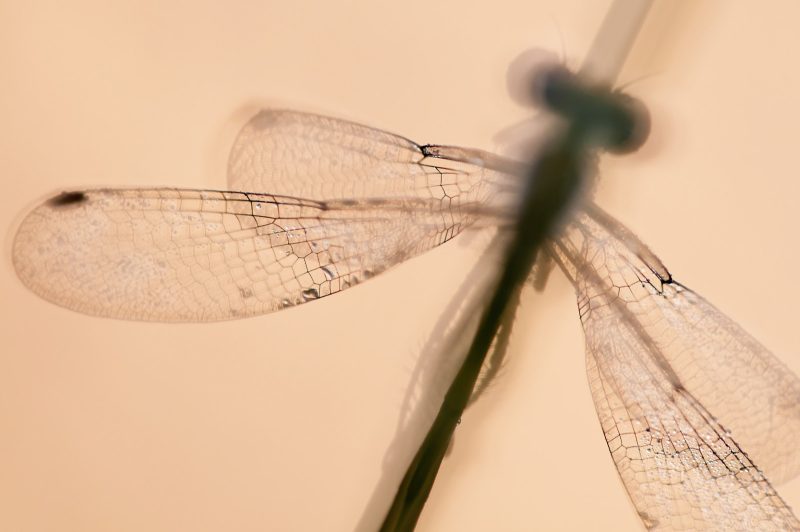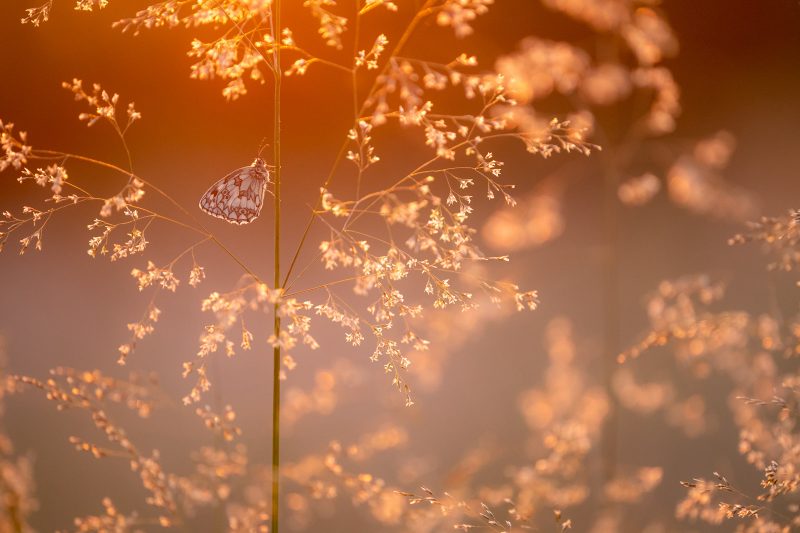6 Tips for Creative Macro Photography

If you’re currently lacking inspiration, our guide to creative macro photography is precisely what you need to reignite your passion and creativity behind the lens.
It’s easy to feel like you’ve exhausted all your ideas or hit a creative block. Perhaps your close-up shots are consistently sharp, well-lit, and technically proficient, but seem they lack that extra special touch.



After all, a technically good image doesn’t always guarantee aesthetic appeal or memorability.
While it’s important to master the art of capturing competent close-ups, if you want your macro shots to stand out from the crowd or succeed in competitions, you’ll need to unleash your inventiveness and embrace creativity.
This may involve looking at subjects from different perspectives, thinking outside the box, and being less conventional.

Instead of fixating solely on depth of field and subject sharpness, explore techniques that yield impressionistic and artistic results.
Experiment with getting even closer to your subject to create abstract images, or step back to provide breathing space and context. Don’t hesitate to play with exposure and white balance to enhance the mood and atmosphere of your photographs.
1. Lose your focus
Macro enthusiasts can sometimes become overly fixated on achieving sharp focus throughout their subjects. However, there are instances when leaving a bit to the viewer’s imagination can be more effective.
Instead of relying on small apertures or focus stacking techniques to achieve a large zone of focus, why not embrace the beauty of blur?
It’s time to shift gears away from the technical aspects and focus on the creative side. While purists may have a different viewpoint, macro photography offers more than just capturing lifelike results.
Instead of fighting against the naturally shallow depth of field associated with macros, consider embracing it as a creative tool. Rather than seeing it as an obstacle, manipulate it to your advantage.

Instead of resorting to stacking or using a small aperture to achieve sharpness throughout the entire subject, try using your lens’s widest aperture (typically f/2.8 or f/4) to highlight a small area. At larger apertures and high magnifications, the depth of field becomes extremely thin.
Therefore, by selecting a point of focus, you can make it stand out sharply, directing the viewer’s attention precisely where you intend.
This technique can be a powerful visual tool, allowing you to emphasize key areas such as the subject’s eye, the tip of a stamen, or a specific colour or texture.
The depth of field will rapidly fall off, keeping the rest of the subject recognizable enough to provide context while remaining sufficiently out of focus to not compete with your focal point.
This will yield compelling and captivating results that encourage viewers to explore the frame while providing a distinct focal point that serves as a compositional anchor.
Personally, I enjoy shooting with my lens wide open in this manner. Although there is no room for error in focusing due to the shallow depth of field, it can produce beautiful outcomes and effectively throw any background distractions out of focus in an attractive manner.

Additionally, faster shutter speeds are achievable, making it easier to capture shake-free results when shooting handheld.
A narrow zone of focus allows you to capture subjects in a way that differs from how our eyes perceive them, prompting viewers to pause, contemplate, and hopefully remember your photograph.
Longer focal lengths tend to exhibit a more pronounced depth of field limitation, so if you desire to further enhance this effect, consider using a macro lens with a focal length of 100mm or higher.
Read more: What’s the Best Macro Photography Lens?
2. Use nature’s design
Your camera only captures and records what you choose to show it. There are no strict rules stating that subjects must be captured in sharp focus, realistic representation, full entirety, or even recognizable form.
While it is often a good option to capture the subject and its behaviour sharply and conventionally, it is important to remain open to creative opportunities. Taking a more imaginative and interpretive approach can result in more captivating photographs.
The key is to thoroughly study your subject and explore its design from various angles — above, below, and beyond the obvious. Embrace your imagination and avoid rushing or framing things in a routine manner whenever possible.
Let nature’s design guide and inspire you.

You might choose to isolate a specific detail or colour, or even abstract the subject entirely. The goal is not to create textbook or wildlife magazine-like images, but to evoke a sense of wonder and awe, and to highlight the subject’s delicacy, design, vulnerability, and scale.
Pay attention to shape and form, as wildflowers, dragonflies, and butterflies possess recognizable outlines and graceful profiles. While technical proficiency remains important, it is your creative vision and interpretation of the subject that truly makes a difference.

Don’t hesitate to be unconventional. For instance, focus on the tip of a subject’s wings instead of its eyes, or isolate a small area of detail or repetition. Lighting plays a crucial role, and backlighting can be particularly effective in highlighting fine, intricate details.
Experiment with silhouetting subjects against a rising or setting sun, or against a colourful sky. This approach can result in atmospheric photographs that convey the subject’s beauty in a more unique way than a traditional close-up shot.
Read more: How to Take Abstract Macro Photos
3. Get negative
Creative composition is key to making your close-up photos stand out. Explore different shooting angles and don’t be afraid to be unconventional or daring in how you position your subject.
Break the widely accepted rules and consider placing your subject centrally in the frame or tucked away in one corner. Remember, experimentation is essential for a creative approach, but be prepared to take many shots that don’t work in order to discover the ones that do!

Macro photographers often become accustomed to filling the entire frame with their subject, but there are more visually stimulating and creative compositions to explore. Consider capturing your subject smaller within the frame.
While frame-filling shots have an immediate impact, they often fail to convey much about the subject. Take a step back or use a shorter focal length to create breathing space around your subject.

This negative space provides context and can better convey your subject’s size and isolation. Be daring and try capturing your subject very small within the frame, allowing lovely bokeh to dominate the image.
Minimalist compositions can be both creative and effective.
4. High key and low key photography
There are several established techniques you can adopt to make your close-up photos more creative and eye-catching.
One technique is high-key photography, which has a simple yet classy appeal. The idea is to capture your subject against a bright, white background, such as snow or a cloudy sky.
If you’re working in close proximity to the subject, you can even introduce an artificial background like a piece of white card. High-key images are graphic and eye-catching, emphasizing the subject’s shape, form, and detail.

To achieve this, use your camera’s histogram to guide you, apply positive exposure compensation, and push the exposure as far as possible without losing highlight detail.
Keep in mind that the results may initially appear washed out and flat on the camera’s screen, but you can enhance contrast and fine-tune the look during editing.
High-key images can also be suitable for black-and-white conversion, so don’t overlook this option. Various natural subjects, particularly flowers and roosting butterflies, lend themselves well to high-key photography.

On the other hand, low-key results can also be striking. Similar to high-key photography, the selection of subjects is crucial. Dark subjects against dark backgrounds can create a captivating effect, especially when back- or rim-lit.
You can introduce an artificial backdrop like a sheet of black card or position yourself carefully to utilize an area of deep shade as your subject’s background.
Once again, using the histogram is important, this time using negative exposure compensation to achieve the low-key look.

While high-key and low-key photography techniques are relatively easy to achieve, they can produce creative and contemporary results.
Read more: How to Take ‘Studio’ Macro Photos with a White Background
5. Double vision
Another way to break out of a macro slump is to play with creative techniques like Intentional Camera Motion (ICM) or use your camera’s multiple exposure mode.
Although both techniques are more commonly applied to other subjects – most commonly landscapes – they also have a role to play in close-up photography.
Results tend to be painterly and impressionistic and won’t be everyone’s cup of tea, but that is fine – remember, we take photographs for our own satisfaction, not to please anyone else.

Both techniques work best when combined with subjects that are instantly recognisable and boast either strong colour or contrast.
Using your camera’s multiple exposure function allows you to layer images that are framed or focused differently – while you can mimic the effect using Photoshop, it is more fun and satisfying to do it in-camera.
One of the most popular techniques is the Orton Effect – when you sandwich a sharp frame with another that is defocused and blurred. Results have a soft, dreamlike glow, that particularly suits flowers, butterflies, and backlit subjects.
Set-up will vary depending on the camera model, but typically the Multiple Exposure mode is found under the Shooting Menu.

Switch it ON and select the number of images you desire – start using two, but once you feel confident, experiment with a higher number of frames.
Shooting ICM and multiple exposures can prove very hit-and-miss, so be prepared to take lots of shots – your success ratio will be low at first. If you like the results, consider combining the two techniques.
Read more: An Introduction to Intentional Camera Movement
6. Using bokeh
We’ve already discussed how a degree of subject softness can help add intrigue and ignite the viewer’s imagination, but the quality of background blur also has creative influence.
Bokeh – pronounced ‘boh-keh’ – is derived from the Japanese word ‘boke’ which means blur. The term refers to the aesthetic quality and character of the soft, out-of-focus parts of an image produced by a lens.

Bokeh is the result of a shallow zone of focus and specifically relates to the way the lens renders out-of-focus points of light.
Your choice of background can make or break your close-ups. Good bokeh will greatly enhance atmosphere and make results more visually pleasing.
The quality and look of bokeh is created by the lens, not the camera, with the shape of the aperture being of particular importance.

When more blades are used in the construction of the iris diaphragm, a more perfect, circular opening – or aperture – is created. This produces softer, more pleasing bokeh – with smooth round circles of light and no hard edges.
Longer focal lengths and some vintage lenses produce particularly pleasing or interesting bokeh.
Background blur can have a significant influence on the look of your macro shots. Water droplets or bright highlights make particularly attractive ‘bokeh balls’ that will help your shots standout aesthetically.
Read more: How to Use Foregrounds & Backgrounds in Macro Photography
In conclusion
Creative techniques and an inventive approach will help you capture original and standout close-up photos.
It’s important to embrace experimentation, but be prepared for a higher number of failures compared to successes. Keep in mind that the results you achieve may divide opinions, as arty and abstract images tend to attract both admirers and critics.
However, in order to break away from the conventional, it’s necessary to let go of restrictions and trust your instincts. This guide is designed to provide a starting point, so let your creative juices flow and explore the endless possibilities.





